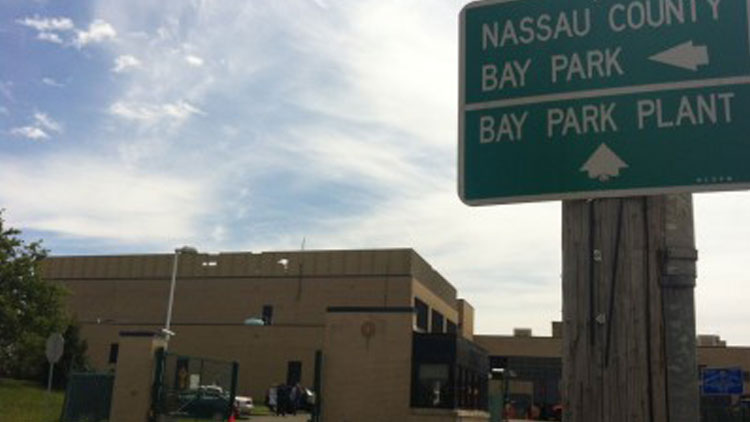A year ago, Nassau County Executive Ed Mangano joined U.S. Sen. Chuck Schumer (D-NY) in Washington D.C. to lobby federal officials for a much-needed ocean outfall pipe at Bay Park Sewage Treatment Plant in East Rockaway.
Fast forward to today, the county is still fighting for the funding—estimated to be between $546 and $700 million—and is also trying to wrap its ahead around why $150 million in supposed federally approved funding for a nitrogen-removal system at the embattled plant never made its way into Gov. Andrew Cuomo’s state budget for this year.
“We need some more financial assistance from our federal and state governments,” Norma Gonsalves (R-East Meadow), the presiding officer of the Nassau legislature, told reporters Wednesday during a press conference at her Mineola office. She added that she does not see a scenario in which the fiscally-strapped county could help pay for the cost of both projects.
FEMA has already granted $810 million to rebuild and harden the plant, but Gonsalves called on Cuomo and Schumer to follow through on earlier efforts to secure additional funding for an outfall pipe that would extend into the Atlantic Ocean, effectively discharging effluent away from vulnerable waterways. Currently, effluent from Bay Park is dumped daily into Reynolds Channel, which connects to the Western Bays. As a result, Marine life and marshlands—which act as natural barriers and protect shorelines from erosion—are suffering from high levels of nitrogen in the water.
Gonsalves said Nassau deserves its fair share of tax dollars, citing a recent study by the business advocacy group Long Island Association (LIA), which found that LI gives the state and federal government an estimated $28 billion more than it gets in return.
That amount of money “would really fund 40 outfall pipes,” Gonsalves said, adding, “We need more of those tax dollars here in Nassau County.”
An army of local lawmakers, environmentalists and state officials, have been calling on the federal government to allocate funding for the outfall pipe for more than a year, to no unveil. Last May, FEMA told the New York State Department of Environmental Conservation that it would not fund the project. That came after an aggressive lobbying campaign by local officials.
Gonsalves said it was “disconcerting” when she read that Cuomo’s budget does not contain the $150 million thought to have been approved to fund a nitrogen removal system for the plant, which serves a half-million Nassau residents.
Just days before the second anniversary of Sandy last October, Schumer released a list of all the projects that had been approved by the federal government, totaling $17 billion. Among them was a nitrogen removal project for Bay Park, paid for with a Community Development Block Grant, funded by the US Department of Housing and Urban Development.
On Oct. 28, Schumer visited the plant with HUD Secretary Julian Castro and highlighted recovery efforts at the plant. A press release announcing the visit said the tour would have a “specific focus on nitrogen removal” and noted that the plant “will receive hundreds of millions of dollars in federal Sandy relief aid, including funding though HUD’s Community Development Block grant program.”
But, as lawmakers recently discovered, funding for that project was missing from the state budget.
Brian Nevin, Mangano’s chief spokesman and his senior policy advisor, said in an emailed statement that commitments were made for the nitrogen removal system’s funding.
“We continue to work with our federal and state partners to secure the funding for an ocean outfall pipe,” he said.
Schumer’s office did not immediately return a call for comment as of press time. Neither did Cuomo’s office.
Meanwhile, Gonsalves hopes to hold her first hearing on the issue in March. At the press conference, she said the two projects are vital to the future of the county.
“Any legacy we leave should be an environment that provides for a clean and safe place for our young people to grow up in,” Gonsavles said.































